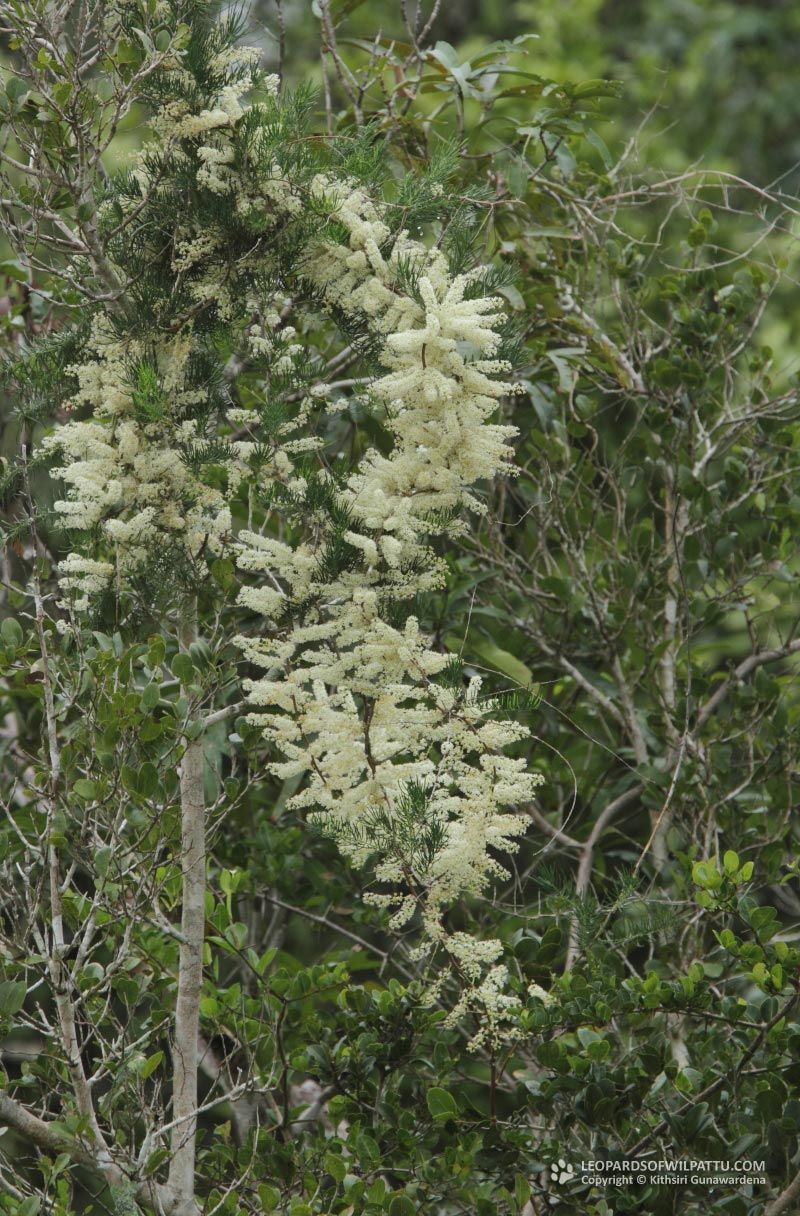
Wild Flowers ‹‹ Go Back
This is an indigenous species, which is found in the dry and intermediate zones of the country. This species is also found in Africa, Madagascar, Southern Asia, China, Malaysia and Australia.
The conservation status of this species is regarded as Least Concerned (National Red List 2012).
This is one of the most important plant species in Ayurveda medicine. The name shatavari literally means, having a 100 spouses. Ayurveda refers to this species, as the queen of herbs and it is the primary herb recommended for female health. Ayurvedic texts claim that the compounds found in the root of this species strengthens a woman to the point where she becomes capable of producing thousands of ova. In India it is used as a remedy for dyspepsia, constipation, stomach spasms and stomach ulcers. It is also used for fluid retention, to relieve pain, anxiety and as a remedy to cure cancer, bronchitis, dementia and diabetes. Woman in India commonly use herbal medicine made with the root of this plant as a remedy against premenstrual syndrome and to increase breast milk production. A. racemosus is also believed to be an aphrodisiac.
This species produces on of the most eye-catching inflorescence in the Sri Lankan forests. I have observed this species in most dry zone national parks as well as in some localities in the intermediate and the hill country.
In Wilpattu the wild asparagus is quite common but is easily overlooked when it is not in bloom. By October and November the inconspicuous vines produce thousand of tiny yellowish white flowers, which becomes a breathtaking sight for any one with an eye for wild flowers. As with many wild flowers it lasts only for about a week. Thereafter small green fruits replace the flowers. I have seen this species in bloom at many locations including Borupan Wila, Maha Wewa, Illanda Mottai, Maradanmaduesa and Thimbiri Wila.











